1. Grand Prismatic Spring, Wyoming
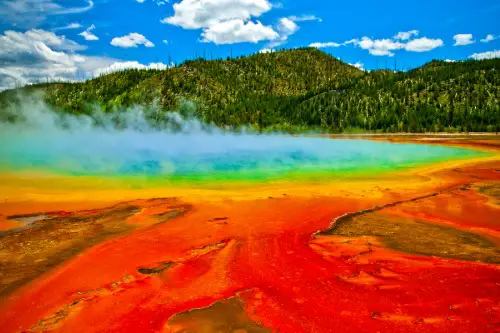
Located in Yellowstone National Park, Grand Prismatic Spring is one of Earth’s most stunning natural spectacles, according to Jacqueline Kehoe from Thrillist. Its radiant colors—from deep blue at the center to fiery reds and oranges at the edges—look more like a cosmic nebula than anything on this planet. These vivid bands are caused by heat-loving bacteria that thrive in the mineral-rich waters, painting the spring in surreal hues. From above, the spring looks like a living rainbow crater embedded in a pale volcanic basin.
As steam rises off the surface and blends with the sky, the entire landscape feels like a scene from a science fiction film. The contrast between the spring’s bold colors and the stark surroundings only adds to its alien aesthetic. It’s a place that engages every sense—smell, sight, and sound—while reminding you just how bizarre and beautiful Earth can be. For visitors, standing on the boardwalk feels like peering into another dimension.
2. Fly Geyser, Nevada
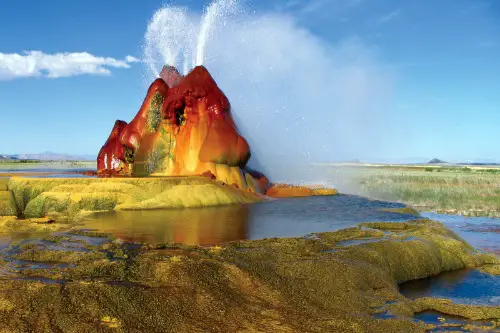
Tucked away in Nevada’s remote Black Rock Desert, Fly Geyser looks like something grown in a lab on Mars. Its constantly evolving cones are colored in electric reds, greens, and yellows thanks to mineral deposits and heat-loving algae. This psychedelic geyser wasn’t formed naturally; it was the result of a failed drilling experiment that unleashed pressurized geothermal water. Today, it bubbles and steams with eerie consistency, sculpting its own alien topography, according to Austin Harvey from All That’s Interesting.
Surrounding the geyser are shallow pools and mineral terraces that reflect the desert sun in surreal ways. With steam drifting over the barren landscape, the area often feels like a portal to a distant world. Though it’s located on private land, guided tours offer access to this visual wonder. Visiting Fly Geyser feels like stepping into a dream—or a glitch in Earth’s design.
3. Antelope Canyon, Arizona
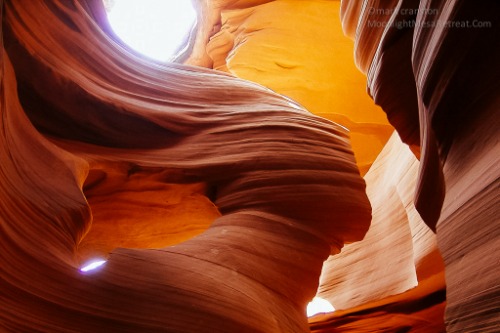
Antelope Canyon is a narrow sandstone passage near Page, Arizona, that feels like Earth’s hidden gateway to another realm, according to Visit Arizona. Shaped over millennia by flash floods and wind, its swirling walls ripple in hues of orange, red, and purple. When sunlight pierces through narrow crevices above, it forms beams that illuminate the canyon in a divine, almost supernatural glow. The effect is both haunting and mesmerizing.
Walking through the tight corridors, the canyon transforms with every step, like moving through a liquid sculpture. The quiet amplifies the surrealism, as the wind whispers across the smooth stone like voices from another time. Photographers often describe it as one of the most magical places on Earth, and it’s easy to see why. It’s not just a canyon—it’s a walk through the fantastical.
4. Craters of the Moon, Idaho
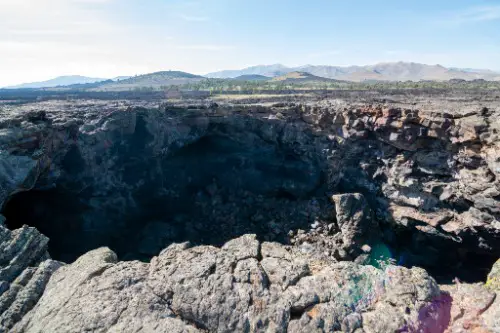
Craters of the Moon National Monument in Idaho is an alien landscape formed by ancient volcanic eruptions. The jagged black terrain stretches for miles, dotted with cinder cones, lava tubes, and twisted rock formations. Walking across it feels like exploring the surface of a forgotten planet, scarred by lava and time. The terrain is so lunar-like that NASA has even used it as a training ground for astronauts.
Despite its desolation, life clings to the edges—tiny plants, mosses, and hardy wildlife survive in crevices and shadows. The absence of modern noise and structures adds to the feeling of total isolation. On clear nights, the dark sky above reveals a canvas of stars that seem closer than anywhere else on Earth. It’s one of the few places where both the ground and the heavens feel extraterrestrial.
5. Badlands National Park, South Dakota
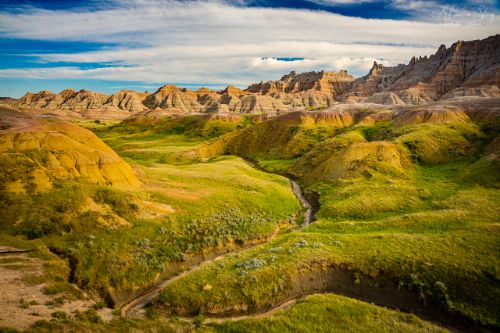
The rugged landscape of Badlands National Park in South Dakota is like stepping onto an alien planet. Eroded buttes, pinnacles, and spires rise dramatically from the prairies, their layered bands of red, orange, and yellow sediment resembling the strata of Mars. This surreal terrain was formed over millions of years as rivers and wind carved through the soft sedimentary rock, leaving behind a landscape that is both desolate and beautiful, according to Cindy Scott from Cinders Travels.
The Badlands are also a treasure trove of fossils, offering a glimpse into prehistoric life. Once an ancient seabed, the park has yielded fossils of saber-toothed cats, rhinoceroses, and other creatures that roamed the area millions of years ago. Walking through its labyrinthine trails, you’re struck by the sense that you’re traversing a forgotten era—or perhaps a distant world entirely. The quiet, vast expanses make the Badlands an awe-inspiring escape from Earth’s usual landscapes.
6. The Wave, Arizona/Utah
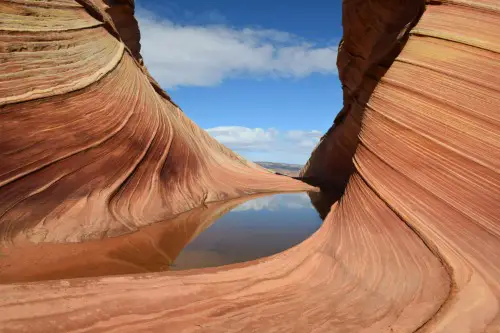
The Wave, straddling the Arizona-Utah border, is a geological masterpiece that feels more like a dreamscape than a natural formation. This sandstone marvel is known for its mesmerizing wave-like patterns of red, orange, and white. These intricate layers were formed over millions of years as wind and water eroded the Navajo Sandstone, leaving behind this strikingly surreal terrain. The curves and striations look like brushstrokes from a celestial artist, drawing visitors from all over the world.
Accessing The Wave requires a bit of luck—permits are granted through a lottery system to preserve its delicate beauty. The hike to reach this phenomenon only heightens the anticipation, with each step bringing you closer to an otherworldly scene that looks more like a digital rendering than reality. Standing amidst its flowing lines and vibrant colors, you can’t help but feel as though you’ve wandered into a different dimension entirely.
7. Mono Lake, California
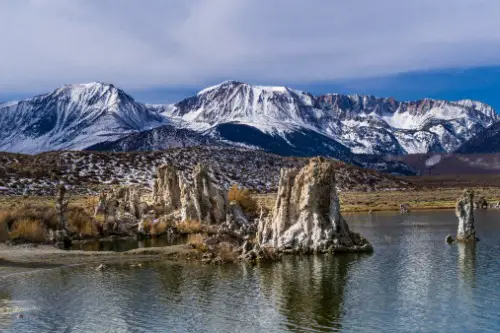
Mono Lake in California is an ancient saline soda lake that defies expectations with its alien landscape. Its most striking feature is the tufa towers—spiky limestone formations that rise dramatically from the water. These eerie structures were formed when freshwater springs mixed with the lake’s alkaline waters, creating an architectural wonder that seems straight out of a science fiction film. The stark contrast between the tufa and the surrounding arid desert adds to its otherworldly charm.
The lake is also a haven for unique ecosystems, hosting brine shrimp and alkali flies that attract millions of migratory birds. Mono Lake’s still, reflective surface often mirrors the sky, creating a surreal visual effect that makes it feel like you’re walking on the edge of two worlds. Whether you’re admiring the tufa at sunrise or exploring the nearby Mono Basin, this site offers a profound sense of Earth’s geological history and alien-like beauty.
8. White Sands National Park, New Mexico
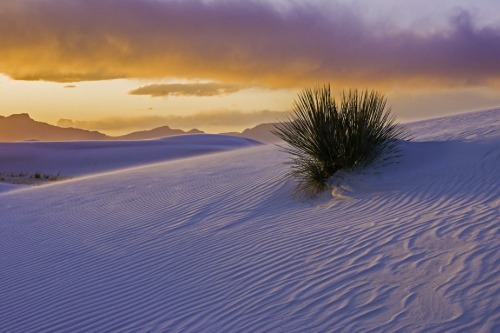
White Sands National Park in New Mexico is a dazzling sea of white gypsum dunes, unlike anything else on Earth. Spanning over 275 square miles, this vast expanse glimmers under the sun, creating the illusion of snow-covered hills in the middle of the desert. The dunes are soft and cool to the touch, as gypsum doesn’t absorb heat, making it a pleasant place to explore even in warmer weather. Walking barefoot through the dunes feels like stepping onto another planet.
What makes White Sands especially enchanting is the way the landscape transforms throughout the day. At sunrise and sunset, the colors of the sky reflect off the sand, painting the entire area in hues of pink, orange, and purple. At night, the stark white dunes under a starry sky evoke a lunar or Martian surface, making it a favorite spot for astrophotographers and stargazers. It’s a place where you can truly lose yourself in nature’s otherworldly beauty.
9. Bryce Canyon, Utah
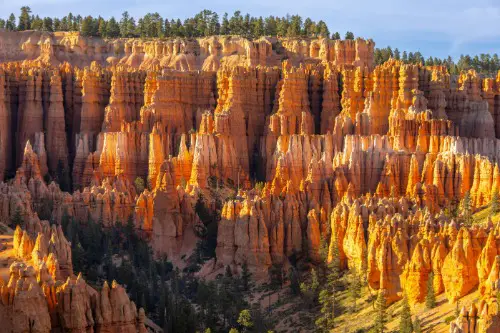
Bryce Canyon National Park in Utah is famous for its hoodoos—tall, thin rock spires that rise from the canyon floor like alien skyscrapers. These formations were created by millions of years of frost weathering and erosion, resulting in a surreal landscape that feels both ancient and futuristic. The amphitheaters where the hoodoos are clustered amplify their visual impact, creating a sense of stepping into an alien metropolis.
Visitors often describe Bryce Canyon as a natural cathedral, with its spires glowing in shades of red, orange, and white as the sun moves across the sky. Hiking through the canyon reveals even more bizarre and intricate formations, each with its own unique shape and character. The park’s high elevation provides clear, dark skies, making it a prime location for stargazing. At night, the hoodoos seem to reach toward the stars, creating a scene that feels utterly unearthly.
10. Devil’s Tower, Wyoming
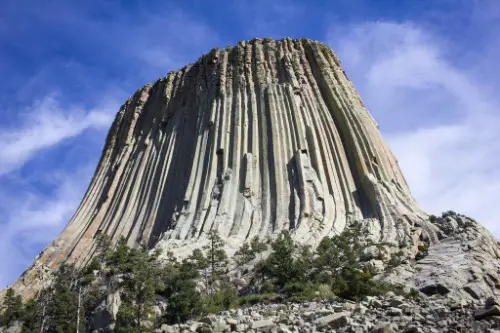
Devil’s Tower, a striking monolithic butte in northeastern Wyoming, rises nearly 900 feet above the surrounding plains. Its sheer vertical walls and flat summit make it an unmistakable landmark that feels more sculpted than natural. Formed by an ancient volcanic intrusion, the tower’s columnar structure is composed of symmetrical basalt columns, giving it a geometric precision that seems otherworldly.
This iconic formation has long been a site of cultural and spiritual significance for Native American tribes, who view it as sacred. It also gained fame as a central figure in the sci-fi film Close Encounters of the Third Kind. Visitors to Devil’s Tower can hike its base, climb its challenging walls, or simply marvel at its imposing presence against the sky. Its stark isolation and towering height make it a powerful reminder of Earth’s volcanic history and its ability to create truly alien-like landscapes.
11. Bonneville Salt Flats, Utah
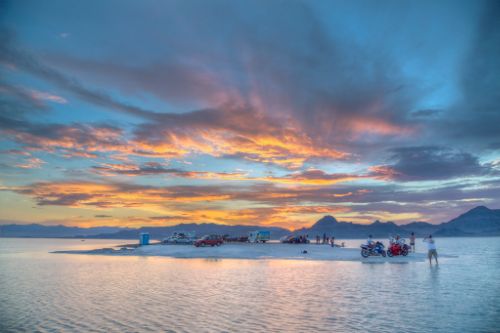
The Bonneville Salt Flats in Utah are a mesmerizing expanse of bright white terrain that stretches endlessly toward the horizon. Covering 30,000 acres, this ancient lakebed is so flat and reflective that it creates the illusion of walking on a mirror. The ground’s crust is made entirely of salt, shimmering in the sunlight and amplifying the vast emptiness of the landscape. It’s a place that feels more like a minimalist art installation than a natural environment.
During certain times of the year, water pools on the flats, creating an otherworldly effect where the sky and ground merge into one. This alien-like setting has made the Bonneville Salt Flats a popular backdrop for movies, photo shoots, and land speed records. Visitors often describe the flats as both haunting and peaceful, a place where time seems to stand still and the boundaries between Earth and the cosmos blur.
12. Great Sand Dunes National Park, Colorado
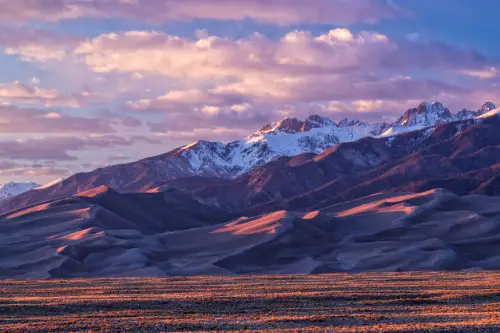
Great Sand Dunes National Park is home to the tallest dunes in North America, some rising over 750 feet high. Surrounded by forests and snow-capped peaks, the sight of these golden waves of sand is strikingly surreal. It’s a dramatic clash of ecosystems—desert meets alpine—that feels like a glitch in Earth’s programming. The sands themselves are ever-shifting, shaped by winds into towering ridges and deep valleys.
Climbing the dunes feels like scaling a mountain on another planet, especially when storm clouds roll in or snow dusts the crests. The park is also known for its dark skies, making it a perfect place to stargaze from atop a dune. As the Milky Way arcs above and sand stretches endlessly below, you’re left with the feeling of floating in space. It’s one of Earth’s most paradoxical and planetary landscapes.


